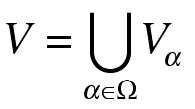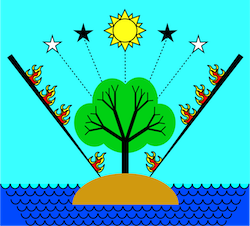
Ritual Kindles Vision
A Digitalist Framework for Modern Paganism
Books
Atheistic Paganism

Elements OverviewTree OverviewOrder of RitualEncyclopediaVideosDOWNLOAD Ritual Kindles Vision |
Ritual Kindles Vision uses ancient pagan thought and modern analytic metaphysics to build a rational framework for contemporary pagan belief and practice. Modern analytic metaphysics provides pagans with a structural theory of existence, an infinitely rich system of mathematical objects, a computational theory of physicality, a plenitude of possible universes crisscrossed by counterpart relations, and new ways of thinking about human experiences, beliefs, and actions. All these resources can be used to construct new ways to understand central pagan concepts and activities. These new ways are cognitively and emotionally rich, deeply meaningful, and rationally defensible. Ritual Kindles Vision builds a pagan worldview which is logically rigorous and well-supported by our best genuine science. It shows how paganism makes sense. Ritual Kindles Vision also shows how to use pagan concepts and practices to reenchant logic, mathematics, science, and philosophy. It treats proofs and arguments as symbolic rituals, and develops its ontology through a series of incantations. Invoking the elemental energies of water, earth, air, fire, and light, Ritual Kindles Vision calls into being the great world tree, which provides a living home for pagan religion and spirituality. Richly illustrated with talismanic symbols, sigils, and diagrams, Ritual Kindles Vision can be read either as one long ritual or used as an encyclopedia. Ritual Kindles Vision is extensively illustrated, both with line art (diagrams) and rich color pictures. Ritual Kindles Vision endorses a pagan universalism, which welcomes all persons of all backgrounds and categories, excludes nobody, and treats everybody with equality and justice. Ritual Kindles Vision honors the pagan past while looking forward to a brighter pagan future. |